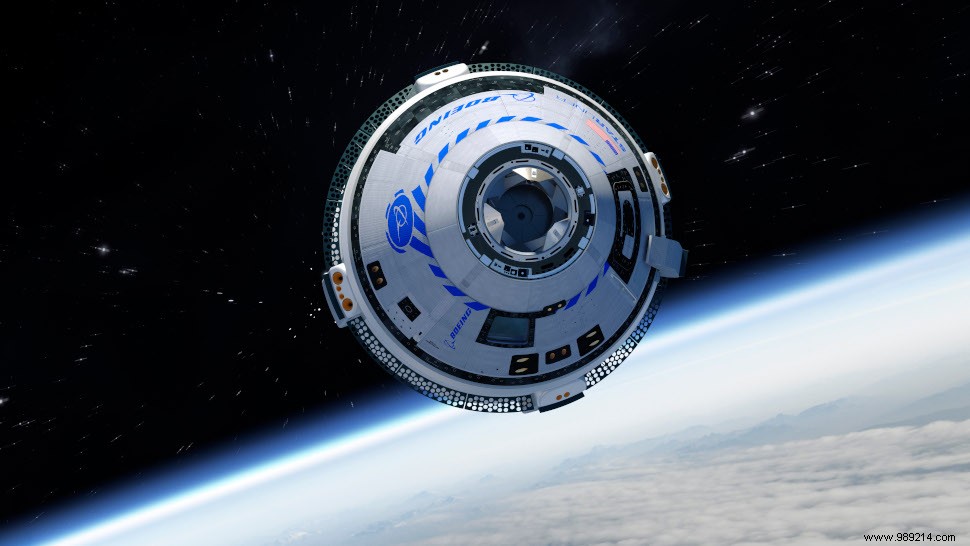NASA and Boeing are working together to attempt a second test flight of the Starliner capsule, which was unable to reach the ISS during its first test. However, the launch window will not be open forever.
Boeing has been working since 2014 on the development of its Starliner capsule as part of a commercial contract signed with NASA to operate flights to the ISS (freight and space transport). 'astronauts).
Long accustomed to working alone and relying on "blank cheques", the company must now deal with a fixed price, forcing managers to monitor possible overruns, while facing competition from SpaceX, also a signatory to the same contract. In the end, Boeing won its bet and offered its ship on time.
For its part, SpaceX had previously attempted and successfully passed an uncrewed flight test of its Crew Dragon ship, but then failed a ground test (April 2019). Also, by taking up this first test flight with NASA, Boeing could probably launch a first manned flight to the ISS a few months later, thus giving itself the means to compete with SpaceX within the framework of this contract, and why not go ahead?
In December 2019, finally ready for its first flight, the space branch of Boeing also had a chance to save a dark year marked by the crash of a 737 MAX, which had cost the lives of the 149 passengers and eight crew members on board a few months earlier.
Those hopes were finally dashed. The Atlas V rocket, above which the Starliner capsule was capped, did indeed take off and executed its flight perfectly. Unfortunately, the spacecraft quickly faced a software problem as soon as it entered space , resulting in what NASA calls an off-nominal insertion . In other words, the capsule landed in the wrong orbit, causing it to burn excess fuel. As a result, the spacecraft was unable to reach the ISS as it was supposed to. A little later, other software failures were noted.
In March 2020, a report examining the reasons for this failure ultimately listed approximately more than eighty fixes . And since then, Boeing has been working on it.
The minor glitches corrected, the company had finally prepared for a second uncrewed mission scheduled for July 30. But here again, technology decided otherwise. This launch was in fact postponed for the first time to August 3 due to an incident with the Russian module Nauka, which has just docked with the ISS, before being postponed again due to a problem. with a valve in the ship's reaction control system that normally helps the vehicle maneuver in space.
Boeing and NASA engineers have since been working on the problem, inevitably pushing back the date of the next launch, indefinitely .
"We'll let the data guide our work “said John Vollmer, vice president of Boeing’s commercial crew program. "Our team has worked diligently to ensure the safety and success of this mission, and we will not launch until our vehicle is nominally functioning and our crews are confident it is ready to fly “.

However, there is another parameter to take into account:Boeing engineers still have a few days ahead of them to try to solve the problem before the window of launch does not close .
Indeed, SpaceX's CRS-23 mission, which is to supply the ISS, is to be launched on August 28. However, there are only two docking ports available for this type of mission on the station. Currently, one is occupied by another Crew Dragon, while the CRS-23 capsule will occupy the second. According to NASA's current schedule, CRS-23 is scheduled to leave the space station on September 30. In this case, Starliner could therefore benefit from an opening in October. But there is another "hiccup".
Indeed, NASA is to launch its Lucy mission, which will assault Jupiter's Trojans during a 21-day launch window opening in mid -october. However, this mission will also fly on an Atlas V rocket, from United Launch Alliance. And ULA reserves a minimum of two or three weeks between each launch. Also, even if Starliner were to launch on October 1, the capsule will likely "eat up" time on Lucy's launch window. However, it seems more likely that NASA will give priority to this mission .
In conclusion, if Boeing fails to launch Starliner over the next few days, the mission could (still) face long delays. And meanwhile, SpaceX continues on its way.